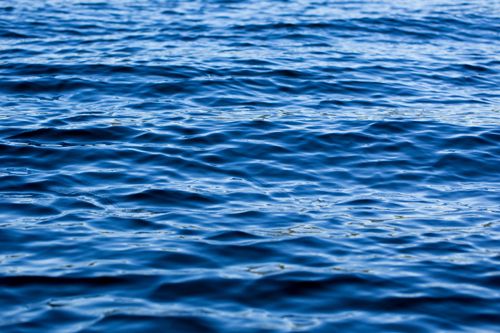Quantifying Aquatic Toxins Using UHPLC–MS/MS
LCGC Europe spoke to Andrew Turner, Principal Chemist in the Food Safety Group at the Centre for Environment, Fisheries, and Aquaculture Science (Cefas) in Weymouth, UK, about developing a simple ultrahigh-pressure liquid chromatography tandem mass spectrometry (UHPLCÐMS/MS) method for the quantitation of microcystins and nodularin in various sample matrices.
Photo Credit: bildfokus.se/Shutterstock.com

LCGC Europe spoke to Andrew Turner, Principal Chemist in the Food Safety Group at the Centre for Environment, Fisheries, and Aquaculture Science (Cefas) in Weymouth, UK, about developing a simple ultrahigh-pressure liquid chromatography tandem mass spectrometry (UHPLCÐMS/MS) method for the quantitation of microcystins and nodularin in various sample matrices. - Interview by Kate Mosford, Managing Editor, LCGC Europe
Q. Your team developed an ultrahigh-pressure liquid chromatography tandem mass spectrometry (UHPLCÐMS/MS) method for the quantitation of microcystins and nodularin in a variety of sample matrices (1). Why are you studying these compounds?
A: This programme of work began in 2012 after the occurrence of a potentially toxic bloom of cyanobacteria, located upstream from a large commercial shellfish bed. At the time of this event we were asked by the regulatory authorities to advise on the potential risks to the shellfish consumer from this bloom, and we soon realized we had no data to enable any risks to be properly assessed, so we set out to collect it.
Within the Cefas Food Safety Group, the harmful algal toxins team are responsible, amongst other things, for the delivery of official control testing of bivalve mollusc shellfish for the presence of regulated marine toxins, such as paralytic shellfish poisoning (PSP), amnesic shellfish poisoning (ASP), and lipophilic toxins (LT). I was aware of incidents in other countries where accumulation of cyanotoxins through the food chain had resulted in intoxication episodes, both in animals and humans, so felt it imperative to, at least, develop suitable approaches for the effective monitoring of risks from cyanobacterial blooms.
Our approach was to first develop a suitable testing method for appropriate cyanotoxins in a range of different samples, most notably in shellfish and in the cyanobacterial cells and the water itself. We began by concentrating our efforts on the detection of microcystins and nodularins, both of which are known to be potential risks in our water systems. We then followed this with a screening study of freshwater samples taken from around England, to assess the occurrence of toxins in natural blooms throughout the year.
In parallel with this, we collaborated with the Robert Gordon University in Aberdeen, UK, to experimentally assess the mechanisms of toxin uptake and depuration in shellfish in contact with cyanobacteria, as well developing the production of cyanotoxin reference materials to enable method development and future quality controls.
Q. Is there any evidence that the occurrence of algal blooms is increasing?
A: There are numerous factors known to affect the occurrence of algal blooms, both marine and freshwater, one of which is temperature. A general rule is that toxin-producing cyanobacteria are more likely to thrive during the warmer months of the year. However, it is too simplistic to say for certain that with climatic change and increasing temperature over time, there will be proportionally more algal blooms.
Other parameters such as nutrient availability, salinity, water flow, rainfall, windspeed, and direction are all known to affect the proliferation of cyanobacteria. In addition, there are many different genera, species, and strains of cyanobacteria, and the relationship between bloom development and toxin production can vary enormously. It is well known that some strains of cyanobacteria do not produce toxins, whereas others are found to produce extremely high concentrations. In our assessment of blooms in England during 2016, for example, 53% were found to contain quantifiable levels of microcystins (2), and there appears to be a general consensus that between 40–50% of cyanobacterial blooms worldwide are not toxin-producing, at least using current detection methodologies.
Therefore, there is the need to support the routine microscopic identification of cyanobacterial cells with toxin detection methods to enable a more thorough assessment of risk to those exposed to such blooms or potentially contaminated food products.
Q. What does your method offer over other established methods?
A: In our role as an official control monitoring laboratory, it is essential that the methods of analysis we use are not just accurate, sensitive, and reproducible, but also rapid and relatively simple to use. This is important because we are required to analyze high numbers of samples quickly, and report results within a strict quality controlled environment in a short timeframe.
I was specifically seeking to develop a method that could be applied to a wide variety of matrices and required relatively little sample preparation, if at all possible.
Following development and optimization, I ended up with a rapid single-step extraction procedure with no requirement for solid-phase cleanâup, prior to filtration and
UHPLC–MS/MS with a fast instrumental cycle time.
The rapid extraction process involves a single-step dispersive extraction. In shellfish tissue, for example, this involved the extraction of 2 g tissue homogenate, with 8 mL 90% aqueous methanol, using a 2-min high-speed vortex mixing step, prior to centrifugation and supernatant filtration. Optimization experiments demonstrated there were no recovery losses of analytes in comparison with double-, triple-, or even quadruple exhaustive extraction methods, so for these particular toxins and matrices, the rapid single-step approach worked extremely effectively. A similar approach has previously been taken successfully for other toxins of marine origin in shellfish tissue, but cannot always be expected to work for every toxin-matrix combination.
Validated method performance characteristics were acceptable in all matrices studied, so I believe this gives us an advantage over other methods, which may be applicable only to one specific matrix, limited numbers of toxin analogues, or which require multiple clean-up steps before analysis.
Q. What were the major challenges you had to overcome when developing this method?
A: We already have a great deal of experience with the development and validation of chemical detection methods for marine biotoxins in shellfish, so are used to the kinds of matrix interferences that can exist in such sample types. In comparison to the detection of marine toxins, however, this method was relatively straightforward to set up, optimize, and validate. The challenges faced ultimately did not require the use of complex multi-stage clean-up protocols, and the simple, fast extraction method was found to be effective. In terms of the UHPLC separation, one initial challenge was optimizing the gradient to achieve appropriate and repeatable chromatographic separation. However, the columns and solvents used resulted in a highly reproducible method, and we generally had no problems with the chromatography.
In terms of the MS/MS detection, there is always the temptation to develop new methods on the most sensitive instrument available. In this instance, I deliberately developed the cyanotoxin method on our least sensitive tandem mass spectrometer because I wanted the method to be applicable to all systems, both now and in the future.
Overall, I think the biggest challenge was developing suitable reference materials in all matrices, to enable the assessment of method trueness, as well as ongoing quality control, especially as there are very few certified reference materials available commercially, and none of these are provided in relevant matrices for our needs.
Q. Do you have any advice for chromatographers who are using tandem mass spectroscopy with UHPLC for the first time?
A: Making the jump to UHPLC from high performance liquid chromatography (HPLC) is not always as big a hurdle as some may fear. My advice would be to always ensure you have a good focus on the basic needs of any UHPLC–MS/MS system. This includes amongst other things, ensuring column connections and other flow path fittings are properly made and maintained, conducting relevant and regular system flushes, using needle wash and flush solvents that are appropriate for the analytes in question, and, of course, using an appropriate analytical column for the method in question. Whilst it may present an additional cost, I would always recommend, where possible, using guard cartridges to protect the front end of your analytical column. These can be changed quickly and at a lower cost, if chromatographic performance is found to deteriorate.
In terms of the mass spectrometer, a focus on regular cleaning of the front end is advisable, although we generally resist the temptation to vent and clean the source unless there are serious problems with sensitivity or there are other method performance issues.
My other advice would be to spend some time reading the available literature and magazines, such as LCGC, to look for published methods or application notes that are already out there. It may well be that a method can be used “off the shelf”, or with a small degree of modification, which may ultimately save a lot of development time. There are also benefits in obtaining training, and of course reading as much about the subject areas as possible can provide valuable insights to help your development as a new UHPLC–MS/MS analyst.
Q. In your view, what are the biggest challenges faced by analysts in the field of natural toxin analysis, and how are they being overcome?
A: In our field of marine and freshwater toxins, a lot of fantastic developments have taken place in the past decade or so. Notably this has involved the move away from live animal assays to the use of instrumental chemical detection methods. With the implementation of such methods, one big challenge is certainly to ensure information on the toxicity of these compounds is advanced and accurate enough to support the conversion of quantifiable concentrations of toxins into an overall level of toxic risk.
Challenges in our area of food safety also result from the ability of increasingly more sensitive detection tools to detect lower levels of toxins, and to detect previously unknown toxins. The absence of reference toxin materials, especially in relevant matrices, also provides analysts with a huge challenge, in terms of being able to develop and validate new toxin detection methods.
Reference
- A.D. Turner, J. Waack, A. Lewis, C. Edwards, and L. Lawton, Journal of Chromatography B1074–1075, 111–123 (2018).
- A.D. Turner, M. Dhanji-Rapkova, A. O’Neill, L. Coates, A. Lewis, and K. Lewis, Toxins10(39), 1–29 (2018).

Andrew Turner graduated from the University of Bristol in the UK with a chemistry degree, followed by a master’s degree in analytical chemistry and a Ph.D. in organic geochemistry under the supervision of Professor James Maxwell FRS. He is currently the Principal Chemist in the Food Safety Group at the Cefas Weymouth laboratory. He is responsible for the analytical chemistry performed for the testing of natural aquatic toxins in shellfish delivered on behalf of the UK competent authorities. His role includes the provision of scientific advice to external and internal customers in relation to toxin-testing methods.

Characterizing Plant Polysaccharides Using Size-Exclusion Chromatography
April 4th 2025With green chemistry becoming more standardized, Leena Pitkänen of Aalto University analyzed how useful size-exclusion chromatography (SEC) and asymmetric flow field-flow fractionation (AF4) could be in characterizing plant polysaccharides.













